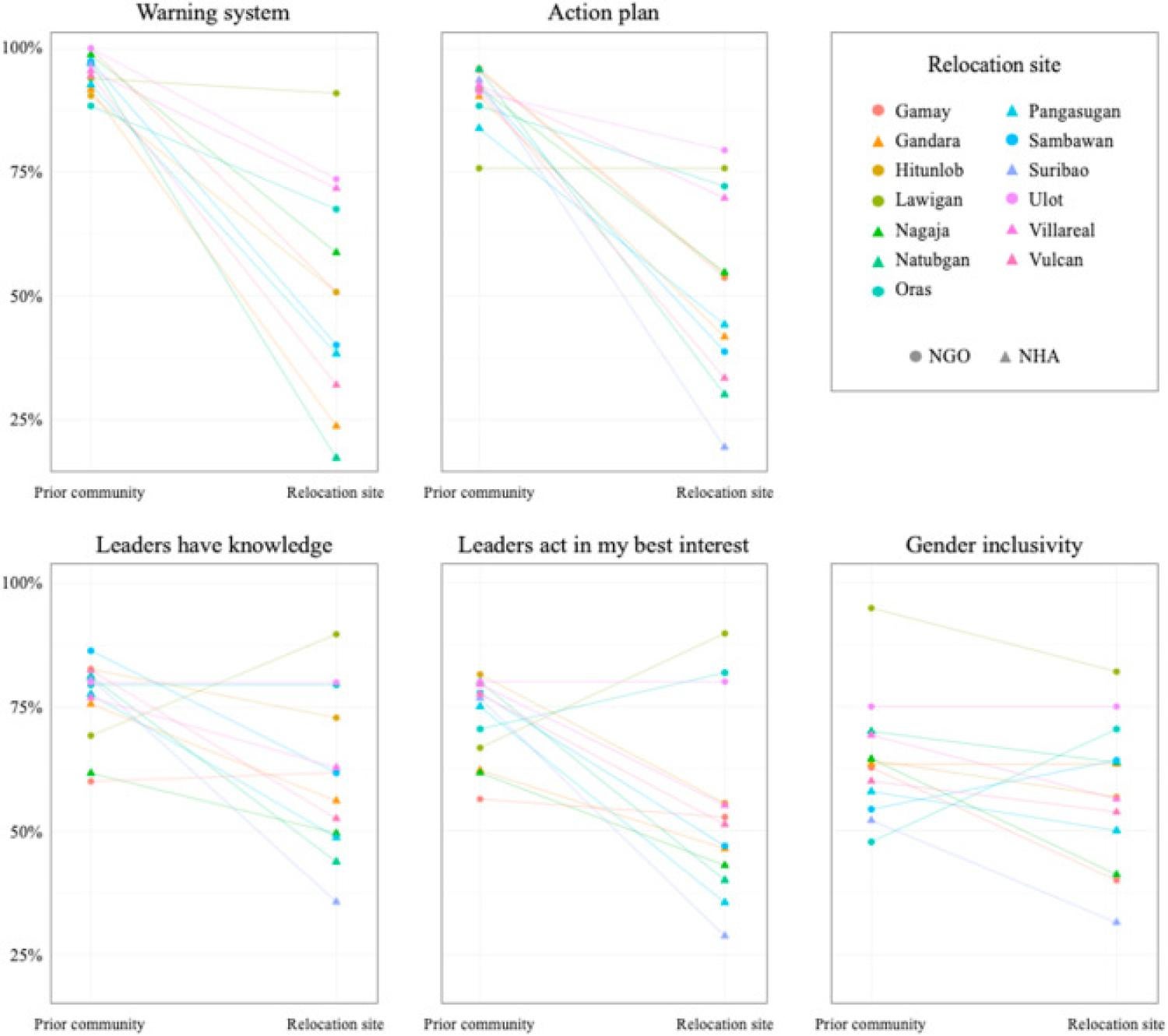Questioning the effectiveness of risk reduction via post-disaster relocation

Post-disaster relocation permanently moves households out of areas highly exposed to hazards, yet risk remains. Communities relocated after a disaster may continue to be exposed and ill-prepared to respond to hazards. To investigate the efficacy of relocation, we studied exposure and preparedness at relocation sites in the Philippines in the wake of Typhoon Haiyan. We evaluated selected elements of risk reduction, such as the establishment of a community disaster warning system, at relocation sites and compare these to households’ locations before the typhoon. Results revealed that decision making for post-disaster relocation needs to better consider multi-hazard risks. Although relocated community members were less exposed to storm surge, nearly all had increased exposure to flooding, with several households forced to evacuate during a flood event. Furthermore, preparedness decreased, as relocated communities were less likely to have a response plan, warning system, or leaders ready to meet the challenges hazards present. The frequency of flooding at relocation sites coupled with low community-level capacity illustrate a need for improved planning and development of post-disaster relocation sites. By demonstrating that relocation is not always effective at creating a wholly safer environment for households, the findings indicate the need for considering additional risks within the decision-making process around relocation as a method of disaster recovery and risk reduction.
Bodine, S. P., Tracy, A., & Javernick-Will, A. (2022). Questioning the effectiveness of risk reduction via post-disaster relocation. International Journal of Disaster Risk Reduction, 71, 102834.
Categories: Journal Articles

